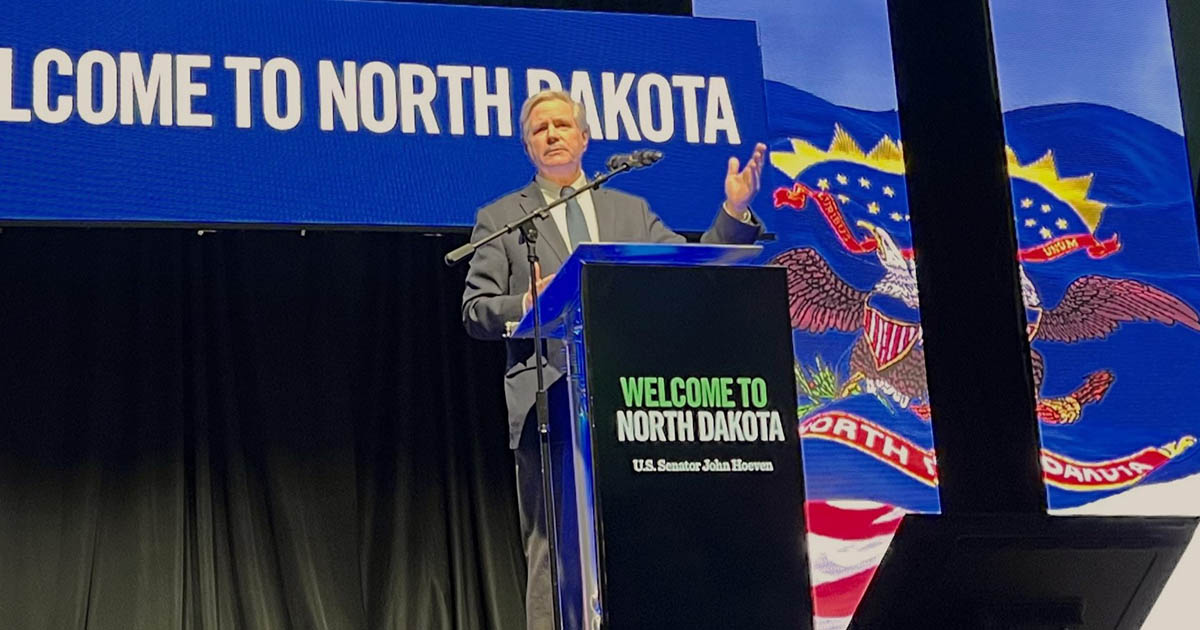Hoeven Outlines Opportunities for New Missions in the Stratosphere
Senator Highlights Benefits of High-Altitude UAS Operations, Aligning with Grand Forks ISR Operations & LEO Satellite Mission
GRAND FORKS, N.D. – Senator John Hoeven today addressed the University of North Dakota’s (UND) Stratospheric Operations and Research Symposium (SOaRS), where he discussed how North Dakota can help enhance national security through missions in the stratosphere, which is approximately between 12 and 32 miles above the Earth’s surface. In particular, the senator highlighted the state’s leadership in unmanned aerial systems (UAS), which when operated in the stratosphere could have:
- Longer flight durations than lower-altitude aircraft.
- This could build upon the work of companies like Packet Digital, which recently received an $8.5 million Navy research contract to develop energy-dense batteries for UAS.
- More flexible payloads compared to satellites in orbit to meet a broader range of operational needs.
These capabilities would provide the Department of Defense (DoD) with new opportunities to gather intelligence, surveillance and reconnaissance (ISR)information and enhance and improve the resiliency of military communications. The senator stressed that North Dakota is well-positioned in both of these priorities due to the leadership of the Grand Forks Air Force Base in Air Force ISR operations, the new low-Earth orbit (LEO) satellite mission that Hoeven worked to bring to the base and the Red River Valley’s unique UAS ecosystem.
“The line between airspace and actual space is becoming blurred,” said Hoeven. “Between the Sky Range program at Grand Sky, Global Hawk operations and the LEO satellite mission, North Dakota is playing a major role in the future of our nation’s defense. The stratosphere offers even more opportunities to enhance that security, and it’s no surprise that UND is taking a leading role in this effort, in part with the symposium they’re holding today with guests not only from across levels of our government, but leaders in this sector from around the world.”
Hoeven’s remarks build upon a meeting he held with leaders from the Grand Forks community, UND and the area’s UAS industry, where he:
- Announced that, at his urging, the Federal Aviation Administration (FAA):
- Has approved beyond-visual-line-of-sight (BVLOS) waivers for UAS flights in the region utilizing enhanced radar software.
- Will approve an additional waiver to allow the test site to host UAS flights for additional companies.
- Outlined the economic impact of Sky Range, the hypersonic missile testing program at Grand Sky.
- Discussed opportunities for the Grand Forks region to help secure the nation’s airspace against the threat of unidentified aerial phenomena (UAP).

-###-
Next Article Previous Article
